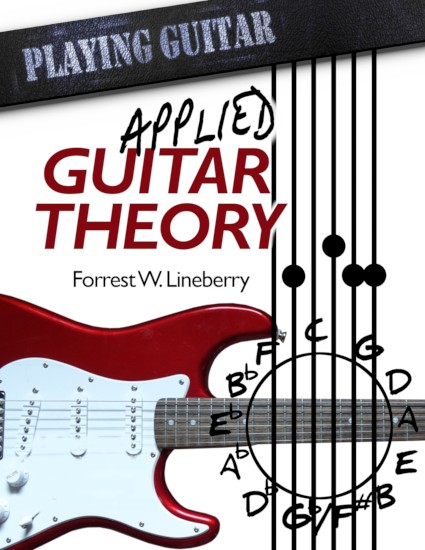Introduction
All the music you hear whether streaming online, listening to the car radio, watching a movie in your home theater or shopping at the mall is made up of individual notes combined in various ways. In order to explore how these individual notes are used, we have to look at how the notes are named and where the notes sit on the guitar fretboard. You don’t have to become a fretboard expert just to get started, A basic understanding of how to find any given note without too much effort is enough to allow you to understand and apply more advanced theory concepts with ease rather than sweat and toil. As you use this information, you’ll naturally get better. Your ability to follow online discussions and perhaps even participate in those discussions will improve. Ultimately, you may decide to devote your efforts to sight reading standard music notation where you’re ability to quickly find notes all over the fretboard will be put to the test.
The Theory
Notes are named after the first seven letters in the alphabet. In order, they are:
A — B — C — D — E — F — G
These are considered the natural notes.
The symbol for natural looks like this:
♮ = natural sign
You won’t see this symbol show up much at first. When talking about natural notes the symbol is understood rather than written most of the time. For our purposes here A = A♮, B = B♮ and so on.
Between any two natural notes, except B — C and E — F, we also have a sharp/flat note.
These are the symbols that are used to denote sharp and flat:
♯ = sharp sign
♭ = flat sign
If we list the notes again and include the sharp/flat notes, we get:
A — A♯/B♭ — B — C — C♯/D♭ — D — D♯/E♭ — E — F — F♯/G♭ — G — G♯/A♭ — A
The important thing to understand, here, is that X♯/X♭ is one note that has two names (The term for this is ENHARMONIC). For example, A♯ is the exact same note as B♭. Sometimes, one name will be used, and sometimes the other name will be used. We will cover this in much greater detail in a later lesson. For now, it’s only important that you know the names of the notes.
Another thing to notice is that after G♯/A♭, we arrive at A again. This second A vibrates exactly twice as fast as the first A, and therefore, the ear tends to hear it as another version of the same note (The term for this is OCTAVE). The second A is said to be an octave higher than the first A. If we continue after the second A, we get A♯/B♭ an octave higher, B an octave higher, C an octave higher etc., etc., until we get to A again. This A is two octaves higher than the first A. If we keep going, the whole pattern just repeats over and over until we can’t get any higher on the instrument. (If you didn’t run out of notes, you could keep right on going until the notes were so high that only a dog could hear them!) The same is true if you travel in the opposite direction. The pattern repeats until you run out of notes, or the neighbors call the cops (whichever comes first).
For practical purposes you don’t have to say octave when you’re naming the notes. An A is an A is an A as far as we’re concerned, right now. You’ll run into the term here and there when talking about music, though.
Here’s something to help you remember the sharps and flats. If you sharpen a pencil, you raise a point on it. Likewise, if you play A and then play the next higher note, you would call the second note A♯. If you flatten a beer can, you mash it down. Likewise, if you play B and then play the next lower note, you would call the second note B♭. Remember that A♯ and B♭ are the exact same note or enharmonic.
This may be a bit confusing, but you’ll get used to it.
All you have to remember is A through G of the alphabet are the natural notes and a ♯/♭ note lies between every two notes except B — C and E — F. For now there’s no such note as B♯ or C♭, likewise, there’s no E♯ or F♭. (There is exception to this but, that’s down the road a bit.)

Book Title
Applied Guitar Theory
A Comprehensive guide to applying music theory on the Guitar Fretboard.
Sell Link
Coming soon!
Sample Chapter Links

